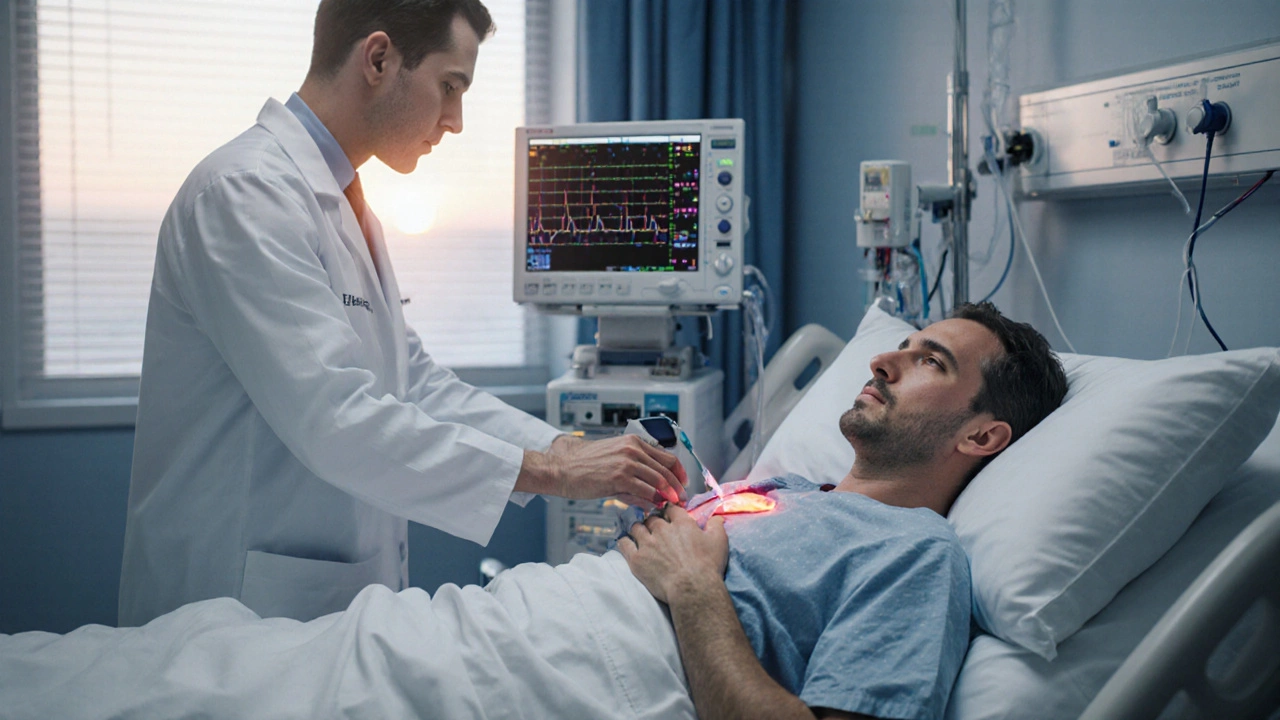Cardiac Rehabilitation Timeline: What You Need to Know
When planning your road back to health after heart surgery, the cardiac rehabilitation timeline, a step‑by‑step schedule that guides patients through safe activity, monitoring, and lifestyle changes. Also known as post‑cardiac rehab schedule, it helps you know when to start walking, when to lift weights, and when to return to work. Understanding this timeline prevents guesswork and keeps your heart protected during each recovery stage.
Why the Timeline Matters
Every heart patient follows a set of cardiac rehab phases, the three progressive periods—early, intermediate, and long‑term—that structure the healing process. Phase 1 focuses on low‑impact activities in the hospital, Phase 2 moves to supervised outpatient work, and Phase 3 adds independent exercise and lifestyle coaching. These phases encompass the whole timeline, making sure you don’t jump ahead or fall behind. Skipping a phase can raise the risk of complications, while completing each step on schedule improves stamina and lowers relapse chances.
The next piece of the puzzle is the exercise protocol, a personalized plan of aerobic, resistance, and flexibility workouts designed by a cardiac therapist. This protocol requires gradual intensity increases, usually measured in METs (metabolic equivalents). Starting with short walks and light cycling, you’ll add minutes and resistance as your heart adapts. The protocol directly influences how quickly you progress through the rehab phases because safe, monitored exercise is the engine that drives heart strength.
Parallel to exercising, heart health monitoring, regular checks of heart rate, blood pressure, and rhythm using wearables or clinic devices, keeps the timeline on track. Monitoring catches early signs of strain, letting therapists adjust the exercise protocol before any danger shows up. It also provides feedback that motivates patients—seeing numbers improve reinforces adherence to the schedule. In short, monitoring enables smarter decisions throughout the rehab journey.
Beyond the structured phases, post‑surgery recovery includes everyday actions like medication adherence, diet tweaks, and stress management. While not a formal phase, these habits affect the overall timeline. For instance, a low‑salt diet can lower blood pressure faster, allowing you to move to a higher‑intensity workout sooner. Conversely, skipping meds may delay progress. Treating recovery as a holistic process ensures each component—exercise, monitoring, lifestyle—supports the others.
Patient education is another key entity that often flies under the radar. Knowing why you’re doing each exercise, how to read your heart monitor, and when to call the clinic empowers you to stay on schedule. Education relates to both the exercise protocol and monitoring, because understanding the ‘what’ and ‘why’ reduces anxiety and improves compliance.
All these pieces—phases, protocol, monitoring, medication, diet, and education—are coordinated by a multidisciplinary team. Cardiologists, physiotherapists, nurses, and nutritionists each bring expertise that shapes the timeline. Their collaboration creates a seamless experience, preventing gaps where a patient might otherwise fall off track.
Now that you’ve seen how each entity fits into the bigger picture, you’re ready to explore the detailed guides below. From early‑stage pain management to long‑term heart‑healthy habits, the articles ahead break down the timeline into bite‑size, actionable steps you can start using today.

Living Alone After Open-Heart Surgery: How Long Is Safe?
Learn the safe timeline to live alone after open-heart surgery, covering medical milestones, home prep, and rehab tips for independent recovery.
read more



